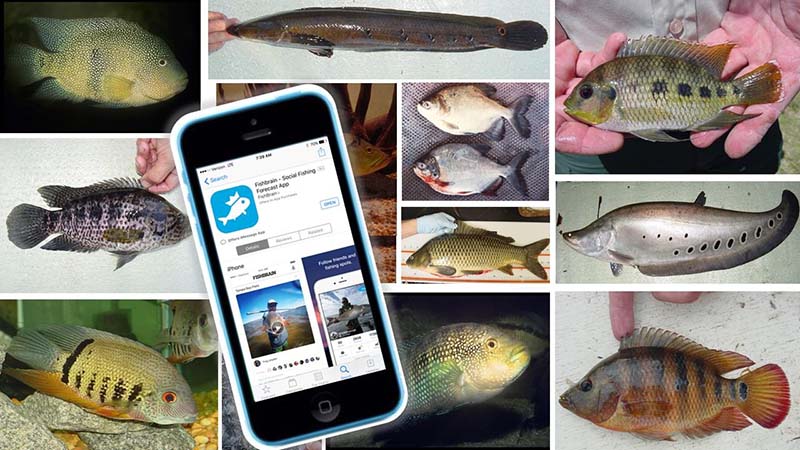
Florida is the pilot state to use Fishbrain technology to help land managers better understand the extent and impact of nonnative aquatic species. Following the Florida campaign, Fishbrain and the Service hope to build on the pilot project in other areas of the country through partnerships with state conservation organizations. With a better understanding of the extent of these species in the environment, resource managers will be able to develop effective tools designed to monitor nonnative species and prevent them from further damaging the biodiversity of ecosystems across the nation.
The Fishbrain app allows users to log catches by recording the location, time, species and a picture of their catch. In December, FWC invited the 250,000 Florida-based users of the Fishbrain app to log catches of 15 different types of nonnative fish in the Florida ecosystem. The FWC promotes the consumptive use of these exotic fish instead of releasing them back into the wild.
The exotic species list consists of Rio Grande cichlid, Jack Dempsey, blackchin tilapia, bullseye snakehead, clown knifefish, jaguar guapote, Mayan cichlid, spotted tilapia, Nile tilapia, banded cichlid, common carp, pacu, flathead catfish, blue catfish and green sunfish. More information on each species can be found at Fishbrain.com External Website and MyFWC.com/nonnatives.
“Anglers come face-to-face with the natural world on a daily basis, and so their hobby relies on maintaining a respectful, sustainable balance with nature. Many of our users are highly aware of the threat to biodiversity posed by invasive species, and so are eager to involve themselves in projects such as this,” said Johan Attby, CEO of Fishbrain. “As the success of our previous conservation initiatives has shown, our users are vigilant, industrious and passionate when it comes to helping protect the ecological balance. We look forward to the success of the project in Florida, before hopefully rolling it out in other states across the country.”
Florida, often dubbed “Fishing Capital of the World,’ is Fishbrain’s biggest market with over 250,000 users. Fishbrain has nearly 3 million users worldwide, with over half of them from the United States.
Sarah Funck, FWC’s nonnative fish and wildlife program coordinator remarked, “Information we receive from this large user group will help our efforts to document and manage these species throughout the state.”
The Fishbrain app is available for download at the Apple Store External Website or Google Play.
For more information about nonnative fish and other nonnative species in Florida, visit MyFWC.com/Nonnative.




